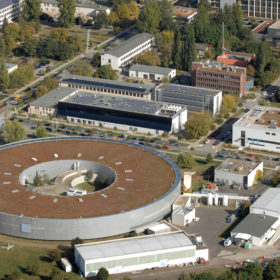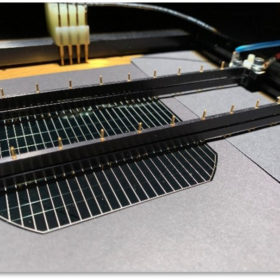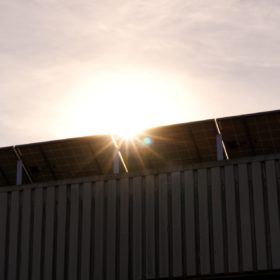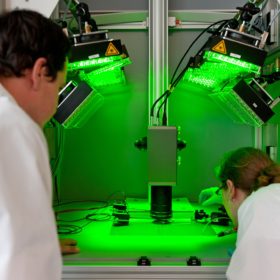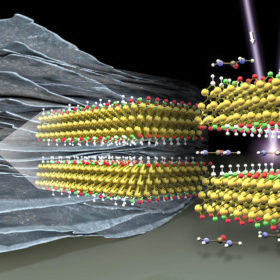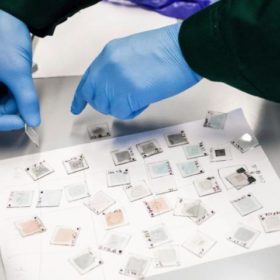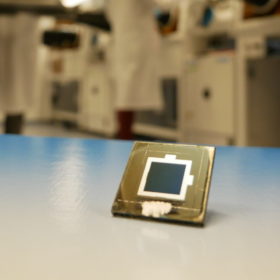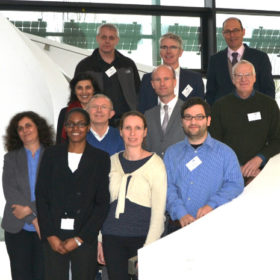Large-scale printing for perovskites
Scientists in Germany investigated printing processes for perovskite solar cells, making some important conclusions for the development of inks suitable for the deposition of perovskite cell materials onto a substrate.
Shedding light on amorphous silicon
Scientists in Europe took a very close look at the thin amorphous silicon layers used in heterojunction and tandem solar cells, building a full picture of the material’s structure at the nanoscale. Their findings could help scientists solve the long-standing mystery of light induced degradation.
Modular systems to produce perovskite-silicon cells on six-inch wafers
Researchers in Germany are scaling up efforts to bring perovskite-silicon tandem solar cell technology into industrial scale production. The scientists say manufacturing cells of that kind is possible on widely-available six-inch silicon wafers and modular systems are being designed to do so at scale.
European consortium bid to bring 25.4%-efficient heterojunction-IBC solar cell into mass production
The EU-funded Nextbase project aims to manufacture heterojunction, interdigitated back-contact solar modules for less than €0.275/W. Solar panels featuring the Nextbase cell tech are expected to have a conversion efficiency of 23.2%, according to the European Commission.
Paving the way for lead-free perovskites
Scientists in Germany and China have developed an additive which greatly improved the performance of a tin-based perovskite solar cell. Cells fabricated with the additive reached 9.1% efficiency, and the researchers say their work opens up many new possibilities to improve the performance of lead-free perovskites.
Speeding up storage with pseudocapacitors
Scientists at Germany’s Helmholtz Zentrum Berlin have made a discovery they say could greatly increase the energy storage capacity of titanium-based ‘MXene’ pseudocapacitors, ultimately leading to faster-charging batteries. The group found adding urea molecules between MXene layers increased the material’s storage capacity by up to 56%.
Japanese manufacturer acquires rights to produce 23.26% efficient CIGS perovskite cell developed by HZB and Kaunas University
The research group that developed the cell said the two materials used to produce it, dubbed 2PACz and MeO-2PACz, will soon be commercially available. The material consists of 1-2nm of self-assembled monolayers deposited on the surface of the perovskite by dipping it into a diluted solution.
HZB hits 23.26% efficiency with CIGS-perovskite tandem cell
Scientists from the Helmholtz Zentrum Berlin research institute this morning presented a new world record efficiency for a tandem cell combining CIGS and perovskite technology at the EU PVSEC conference in Marseille. The development of an organic coating layer between the two semiconductors was key.
Helmholtz Center achieves 21.6% for perovskite CIGS tandem solar cell
The German researchers were able to improve the efficiency through a simplified production process.
EU project aims for improved solar-based hydrogen
The €2.5 million EU Horizon 2020 project coordinated by HZB tests materials to stabilize a membrane for photovoltaic-based hydrogen production.
